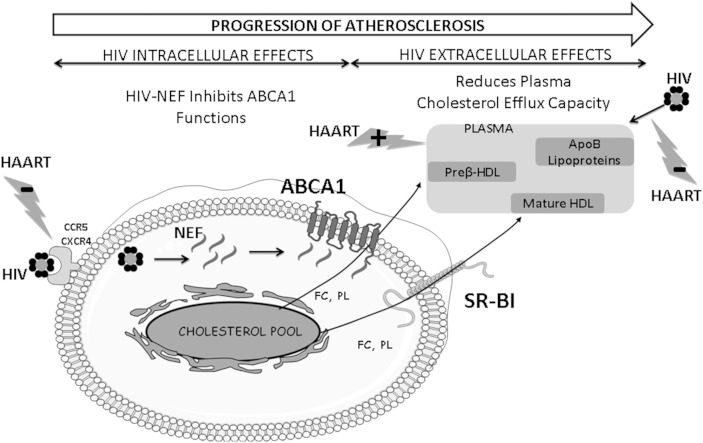Fig. 5.
Integrated mechanism of the intracellular and extracellular consequences of HIV infection that control cholesterol homeostasis in human macrophages. HIV penetrates into macrophages through a direct interaction with CCR5 and CXCR4 receptors. It has been formerly demonstrated that HIV-specific protein Nef binds to ABCA1 and inhibits its efflux functions in human macrophages (31). Thus, by reducing cholesterol efflux through ABCA1 toward circulating lipid-poor/lipid-free apoAI and to small HDL3 subspecies, HIV infection potentially alters plasma cholesterol efflux capacity from human macrophages. In parallel, following HIV infection, major structural and functional modifications in plasma lipoproteins occur resulting in a reduction of the capacity of HDL particles to stimulate cholesterol efflux through the ABCA1 pathway. Taken together those effects of HIV infection on human macrophage homeostasis might significantly increase the risk of cardiovascular disease and favor the progression of atherosclerosis in HIV-infected patients. Increasing the capacity of plasma to stimulate cholesterol efflux via ABCA1, the major macrophage cholesterol transporter, is an interesting approach to reduce cardiovascular risk in this population. HAART restores HDL-mediated cholesterol efflux from macrophages either directly by acting on its metabolism or indirectly by suppressing viral charge and thus eliminating HIV adverse effects on HDL functionality.

